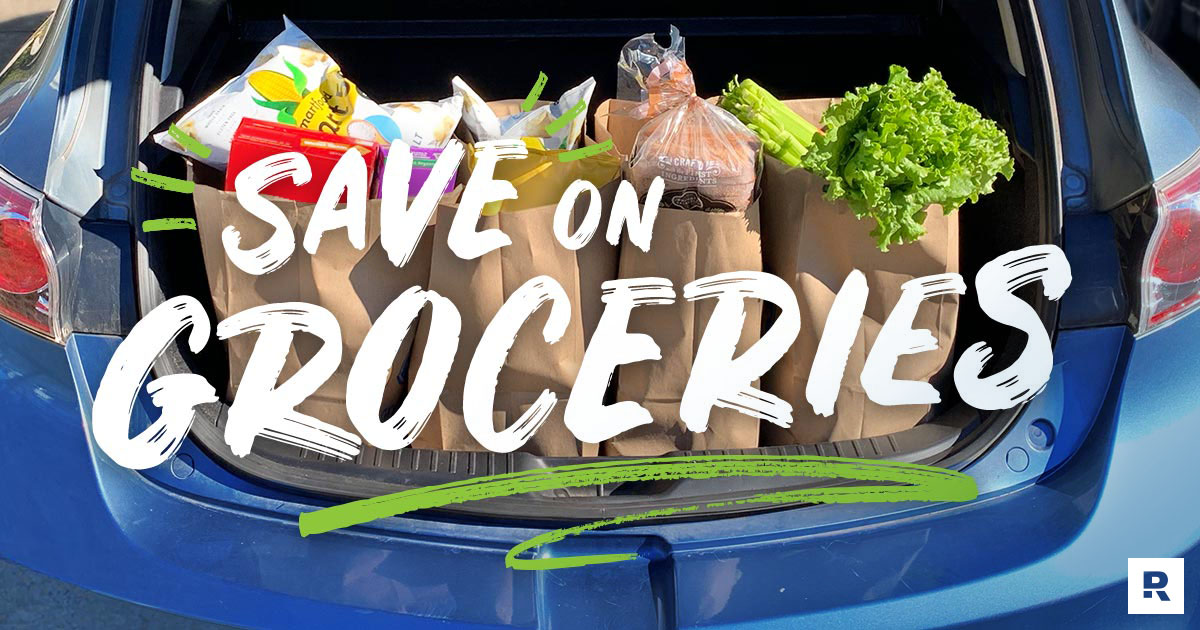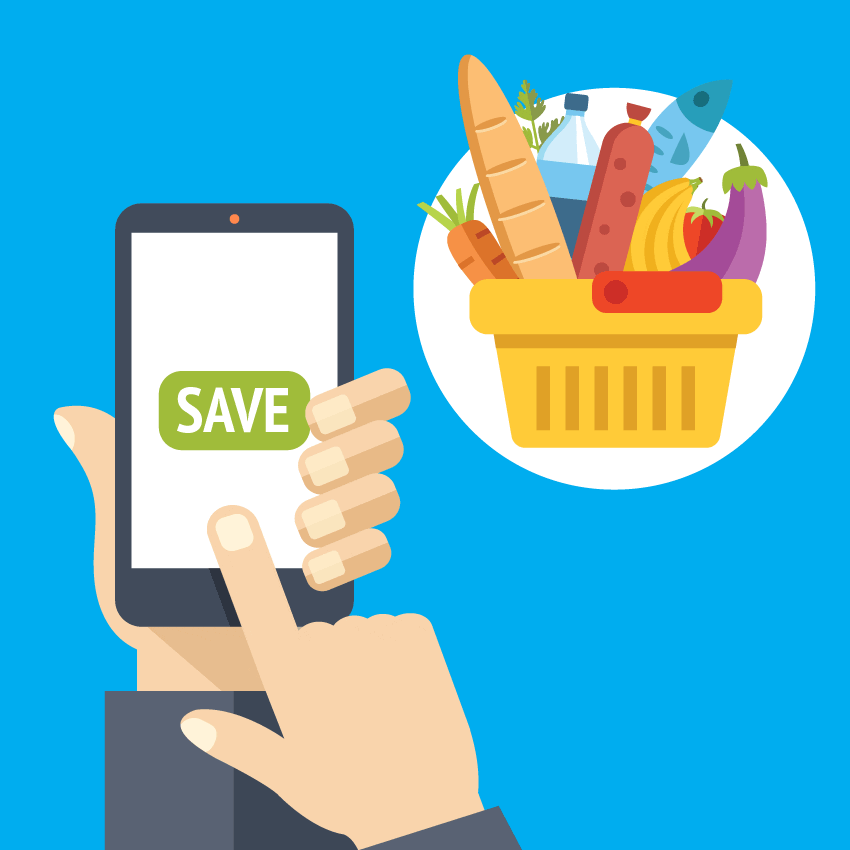To save money on groceries, plan your meals and stick to a list. Utilize coupons and buy in bulk when possible.
Navigating the grocery store aisles can sometimes feel like a daunting task, especially when you’re trying to keep a tight budget. Everyone needs to eat, but finding ways to cut down on grocery expenses without sacrificing quality or nutrition can seem challenging.
Fortunately, with a bit of strategy and smart shopping, it’s entirely possible to reduce your spending. This guide aims to provide practical, actionable tips that can help you save money on groceries. By adopting a few simple habits and making mindful choices, you can significantly lower your monthly grocery bill while still enjoying your favorite meals. Remember, saving money on groceries doesn’t have to mean compromise; it’s all about shopping smarter.

Credit: www.pinterest.com
Introduction To Grocery Savings
Introduction to Grocery Savings is key for smart shopping.
Grocery bills can eat up a big part of our budget. Yet, there are ways to cut down these costs without sacrificing quality. This section dives into the benefits of smart shopping and how to set the stage for significant savings.
The Impact Of Smart Shopping
Smart shopping can greatly reduce your grocery bills. It involves planning, comparing prices, and buying wisely. Let’s explore how this approach can make a big difference.
- Plan meals ahead to avoid impulse buys.
- Use coupons and deals to save money.
- Compare prices at different stores.
- Buy in bulk for non-perishable items.
Setting The Stage For Savings
Preparing to save on groceries requires a few steps. These steps ensure you’re ready to cut costs effectively.
- Create a shopping list and stick to it.
- Set a budget for how much you want to spend.
- Check your pantry before shopping to avoid duplicates.
- Shop seasonally for fresh produce savings.

Credit: www.ramseysolutions.com
Budgeting Before Buying
Smart shopping starts with a plan. A well-thought-out grocery budget can lead to big savings. This guide will show you how to trim your bills without cutting back on quality.
Creating A Grocery Budget
Know your limits before hitting the store aisles. Start by reviewing your monthly income. Then, decide how much you can spend on groceries. A clear budget helps you avoid overspending.
Use these steps to set up your budget:
- Review past grocery receipts.
- Calculate an average monthly spend.
- Adjust the amount for savings goals.
- Set a realistic and manageable budget.
Stick to your budget. It steers you towards smarter choices and discounts.
Tracking Your Spending
Keep tabs on every penny with spending trackers. They show where your money goes. You’ll spot trends and adjust habits accordingly.
Here’s a simple way to track:
- Use a budget app or spreadsheet.
- Log every grocery purchase.
- Review weekly and monthly totals.
- Identify areas to cut costs.
Regular tracking keeps your grocery budget in check. It also highlights potential savings. Embrace these habits, and watch your grocery bills shrink.
Smart Shopping Lists
Smart shopping lists can transform the way you buy groceries. These lists ensure you buy what you need without overspending. Let’s dive into making your shopping list work for your wallet.
Prioritizing Needs Over Wants
Create a list that focuses on essentials. This avoids impulse buys. Here’s how to do it:
- Review your pantry and fridge before shopping.
- Plan meals for the week, noting needed ingredients.
- Add items to your list as you run out.
- Separate your list into ‘needs’ and ‘wants’.
- Stick to the ‘needs’ section when on a tight budget.
Utilizing Digital Tools For List Management
Use apps to keep your grocery list organized and accessible. Benefits include:
- Sync lists across devices for easy access.
- Update in real-time as you think of new items.
- Share with family members to avoid duplicates.
- Track spending and stay within budget.
Popular apps for list management include Out of Milk, Bring!, and AnyList.
Timing Your Trips Wisely
Smart shopping saves money. Timing trips to the grocery store is key. Let’s explore when and how to shop to keep more cash in your pocket.
Best Times To Shop
Shop on weekdays to avoid crowds. Wednesday evenings often bring new sales. Retailers may apply discounts to clear stock. Early mornings provide fresh inventory and short lines.
Late nights offer markdowns on bakery and produce items. Shop early for the best selection. Shop late for the best deals.
Seasonal Shopping Strategies
Seasons affect food prices. Learn seasonal cycles to predict sales.
- Buy in bulk during peak season.
- Freeze or can surplus for off-season use.
- Local produce is cheaper in harvest months.
Use a seasonal food calendar. It helps plan meals around sales.
| Season | Produce to Buy |
|---|---|
| Spring | Asparagus, Strawberries |
| Summer | Berries, Peaches |
| Fall | Apples, Squash |
| Winter | Citrus, Kale |
Track sales cycles. Stock up on non-perishables every 6-8 weeks. Prices for these items hit lows during this period.
Store Selection And Comparison

Smart shopping starts with store selection and comparison. This strategy can lead to significant savings on groceries. It’s not just about what you buy, but where you buy it.
Choosing The Right Store
Not all grocery stores offer the same prices. Some focus on discounts, while others offer premium services. Choose a store that aligns with your budget and needs. Consider local markets for fresh produce at lower costs. Chain supermarkets often provide value through loyalty programs.
- Discount stores: Great for bulk buys and generic brands.
- Local markets: Offers fresh produce at competitive prices.
- Supermarkets: Wide selection with potential for reward savings.
Price Matching Policies
Many stores have price matching policies. They match lower prices found at competitors. Always check the store’s policy before shopping. Bring evidence of lower prices, such as flyers or advertisements.
| Store | Price Matching |
|---|---|
| Store A | Matches local competitors |
| Store B | Includes online prices |
| Store C | No price matching |
Look for stores that match online prices for additional savings. Some stores even offer price adjustments after purchase. Keep your receipts and stay informed on price drops.

Credit: www.incharge.org
Leveraging Coupons And Deals
Everyone loves saving money, especially on groceries. Leveraging coupons and deals can lead to big savings. Let’s dive into how to make the most out of coupons and loyalty programs.
Finding And Organizing Coupons
Finding coupons is easier than you think. Look in newspapers, store flyers, and online. Websites and apps offer tons of coupons. Organize them in a binder or digital folder. This makes it easy to find the right coupon when you need it.
- Check websites of your favorite stores for digital coupons.
- Use apps like Ibotta and Coupons.com for more deals.
- Organize coupons by expiration date or product type.
Maximizing Loyalty Programs
Many stores have loyalty programs. They offer special prices and extra coupons. Use your loyalty card every time you shop. Combine loyalty savings with coupons for the best deals.
- Sign up for store loyalty programs.
- Download the store’s app for exclusive deals.
- Combine loyalty discounts with coupons.
Remember to always scan your loyalty card or app at checkout. This ensures you get all possible discounts.
Bulk Buying Benefits
Unlock the power of your grocery budget with bulk buying benefits. Smart shoppers know that buying larger quantities can lead to big savings. This guide reveals the secrets to making the most of bulk purchases.
When To Buy In Bulk
Consider these tips to master the timing of bulk purchases:
- Non-perishable goods: Stock up on items with long shelf lives.
- Sale cycles: Purchase during sales for maximum savings.
- Essential items: Buy daily use products in larger quantities.
- Space check: Ensure you have enough storage before buying.
Storing Bulk Purchases
Keep your bulk items fresh and organized:
| Item Type | Storage Solution |
|---|---|
| Dry goods | Airtight containers in a cool, dry place |
| Canned items | Pantry shelves, away from heat and light |
| Freezable goods | Freezer bags or containers, labeled with dates |
Label and date your bulk items for easy access and freshness tracking. Maximize shelf life and minimize waste.
Understanding Unit Prices
Shopping for groceries can quickly become expensive. Smart shoppers know that finding the best deals goes beyond looking for sales. Unit prices provide a clear picture of what you’re really spending. By understanding and comparing unit prices, you can make better decisions and save money on your grocery bill.
Calculating Cost Per Unit
The cost per unit tells you the price for a single measurement unit of a product. To calculate, divide the total cost by the number of units. This gives you a consistent basis for comparison.
For example, a 12-ounce box of cereal costing $3.99 works out to:
$3.99 (Cost) ÷ 12 (Ounces) = $0.33 per ounce
This calculation can help you determine which size offers the best value.
Comparing Unit Prices For Savings
Comparing unit prices between products can lead to significant savings. Look for the unit price on the shelf label. Use this to compare different brands and sizes.
Consider a smaller pack may have a higher unit price than a larger one. Buying in bulk can often mean lower unit prices, but only if you use all the product before it expires.
Use a calculator to check unit prices if they’re not displayed. Always update your unit price knowledge, as prices change frequently.
| Product | Size | Price | Unit Price |
|---|---|---|---|
| Brand A Cereal | 12 oz | $3.99 | $0.33/oz |
| Brand B Cereal | 16 oz | $4.99 | $0.31/oz |
The table shows Brand B offers a better deal per ounce. By understanding and using unit prices, you can stretch your grocery budget further.
Minimizing Waste
Minimizing waste is key to saving money on groceries. Smart strategies turn leftovers into savings. Let’s cut waste with meal planning and proper food storage.
Meal Planning
Meal planning is a game-changer. It means buying only what you need. It starts with a weekly menu. You then create a shopping list. Stick to this list. It prevents impulse buys. It also ensures you use all you buy.
- Check the pantry first.
- Plan around sales and seasonality.
- Use leftovers creatively.
- Set a ‘leftover night’ weekly.
Proper Food Storage Techniques
Proper food storage extends shelf life. It means less spoilage. It helps maintain freshness. Learn the best ways to store different foods.
| Food | Storage Method |
|---|---|
| Bread | Freeze if not using soon |
| Herbs | Wrap in damp paper, refrigerate |
| Fruits | Keep at room temperature |
| Vegetables | Store in crisper drawer |
- Keep grains in airtight containers.
- Store dairy at the back of the fridge.
- Keep bananas away from other fruits.
- Freeze meat you won’t use immediately.
Seasonal And Local Purchases
Smart shoppers know that seasonal and local purchases are key to saving money on groceries. By aligning shopping habits with the seasons and focusing on local produce, consumers can enjoy a host of benefits. This approach not only helps in cutting costs but also supports the local economy and ensures fresher produce on your table.
Benefits Of Seasonal Buying
- Lower Prices: Fruits and vegetables in season are more abundant and cheaper.
- Peak Flavor: Produce is freshest and tastes best when bought in season.
- Nutritional Value: Seasonal produce is picked at the right time, so it’s healthier.
- Variety: Eating seasonally adds diversity to your diet throughout the year.
Supporting Local Markets
- Community Growth: Buying local helps your area’s economy and creates jobs.
- Environmental Impact: Local produce travels less, reducing carbon footprints.
- Know Your Food: You can learn how your food is grown and who grows it.
- Freshness: Local markets offer the freshest options, often picked that day.
Online Grocery Shopping
Today, Online Grocery Shopping is a game-changer for saving money. It’s easy and quick. Let’s dive into its pros and cons and how to find online discounts.
Pros And Cons
Online grocery shopping offers both good and bad sides.
- Pros:
- Shop from home.
- Compare prices easily.
- Avoid impulse buys.
- Cons:
- Delivery fees.
- Can’t check freshness.
- Must wait for delivery.
Finding Online Discounts
Finding deals online can help you save more. Here’s how:
- Use coupon codes.
- Join loyalty programs.
- Shop during sales.
Remember to compare prices on different sites. Also, look for free shipping options.
Conclusion: Cultivating Smart Shopping Habits
Smart shopping saves money. This guide helps you learn how.
Recap Of Key Strategies
- Plan meals ahead and stick to your list.
- Use coupons and shop during sales.
- Buy in bulk for items you always use.
- Choose store brands over national ones.
- Eat before shopping to avoid impulse buys.
Continual Savings Growth
Start small. Watch your savings grow. Every little bit helps.
| Week | Savings |
|---|---|
| 1 | $5 |
| 2 | $10 |
| 3 | $15 |
Track your savings. Feel proud. Your efforts make a difference.
Frequently Asked Questions
What Are 3 Tips For Saving Money On Food?
To save money on food, plan meals weekly, buy in bulk, and opt for seasonal produce. Stick to your grocery list and avoid impulse buys. Cook at home more often and limit dining out.
How To Make Your Grocery Bill Cheaper?
To reduce your grocery bill, buy in bulk, choose store brands, use coupons, avoid impulse buys, and plan meals around sales.
What Is The 6 To 1 Grocery Method?
The 6 to 1 grocery method is a shopping strategy where you buy six staple items for every one luxury or non-essential product.
How Can I Stop Spending So Much On Groceries?
To reduce grocery spending, plan meals, use a list, buy in bulk, choose generic brands, and avoid impulse purchases.
Conclusion
Saving on groceries is achievable with the right strategies. Embrace planning, coupon use, and seasonal shopping to reduce bills. Remember, small changes lead to significant savings. Start applying these tips today and watch your grocery expenses drop. Your wallet will thank you.

